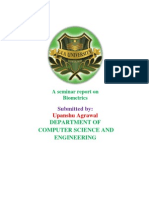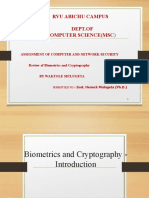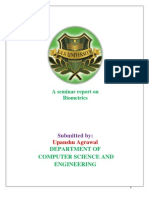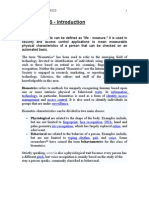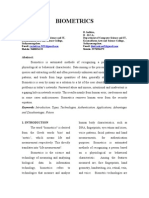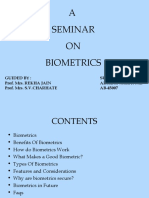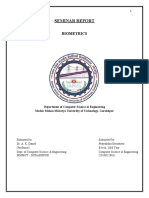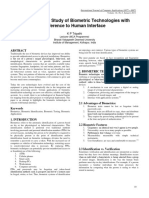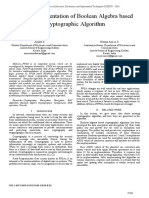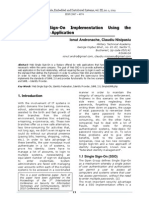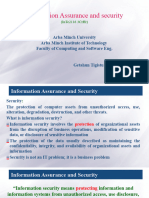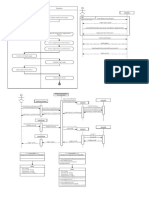Biometrics - Quick Guide
Biometrics Overview
The term Biometrics is composed of two words − Bio (Greek word
for Life) and Metrics (Measurements). Biometrics is a branch of
information technology that aims towards establishing one’s
identity based on personal traits.
Biometrics is presently a buzzword in the domain of information
security as it provides high degree of accuracy in identifying an
individual.
What is Biometrics?
Biometrics is a technology used to identify, analyze, and measure
an individual’s physical and behavioral characteristics.
Each human being is unique in terms of characteristics, which
make him or her different from all others. The physical attributes
such as finger prints, color of iris, color of hair, hand geometry,
and behavioral characteristics such as tone and accent of speech,
signature, or the way of typing keys of computer keyboard etc.,
make a person stand separate from the rest.
This uniqueness of a person is then used by the biometric
systems to −
Identify and verify a person.
Authenticate a person to give appropriate rights of system
operations.
Keep the system safe from unethical handling.
What is a Biometric System?
A biometric system is a technology which takes an individual’s
physiological, behavioral, or both traits as input, analyzes it, and
identifies the individual as a genuine or malicious user.
Evolution of Biometrics
�The idea of biometrics was present since few years from now. In
14th century, China practiced taking finger prints of merchants
and their children to separate them from all others. Fingerprinting
is still used today.
In the 19th century, an Anthropologist named Alphonse
Bertillion developed a method (named Bertillionage) of
taking body measurements of persons to identify them. He
had realized that even if some features of human body are
changed, such as length of hair, weight, etc., some physical
traits of body remain unchanged, such as length of fingers.
This method diminished quickly as it was found that the
persons with same body measurements alone can be falsely
taken as one. Subsequently, Richard Edward Henry from
Scotland Yard developed a method for fingerprinting.
The idea of retinal identification was conceived by Dr.
Carleton Simon and Dr. Isadore Goldstein in 1935. In 1976, a
research and development effort was put in at EyeDentify
Inc. The first commercial retina scanning system was made
available in 1981.
Iris recognition was invented by John Daugman in 1993 at
Cambridge University.
In 2001, Biometrics Automated Toolset (BAT) was introduced
in Kosovo, which provided a concrete identification means.
Today, biometric has come up as an independent field of study
with precise technologies of establishing personal identities.
Why Biometrics is Required?
With increasing use of Information Technology in the field of
banking, science, medication, etc., there is an immense need to
protect the systems and data from unauthorized users.
Biometrics is used for authenticating and authorizing a
person. Though these terms are often coupled; they mean
different.
Authentication (Identification)
This process tries to find out answer of question, “Are you the
same who you are claiming to be?”, or, “Do I know you?” This is
�one-to-many matching and comparison of a person’s biometrics
with the whole database.
Verification
This is the one-to-one process of matching where live sample
entered by the candidate is compared with a previously stored
template in the database. If both are matching with more than
70% agreeable similarity, then the verification is successful.
Authorization
It is the process of assigning access rights to the authenticated or
verified users. It tries to find out the answer for the question, “Are
you eligible to have certain rights to access this resource?”
Shortcomings of
Conventional Security Aids
The conventional methods of information system security used ID
cards, passwords, Personal Identification Numbers (PINs), etc.
They come with the following disadvantages −
They all mean recognizing some code associated with the
person rather than recognizing the person who actually
produced it.
They can be forgotten, lost, or stolen.
They can be bypassed or easily compromised.
They are not precise.
In such cases, the security of the system is threatened. When the
systems need high level of reliable protection, biometrics comes
to help by binding the identity more oriented to individual.

